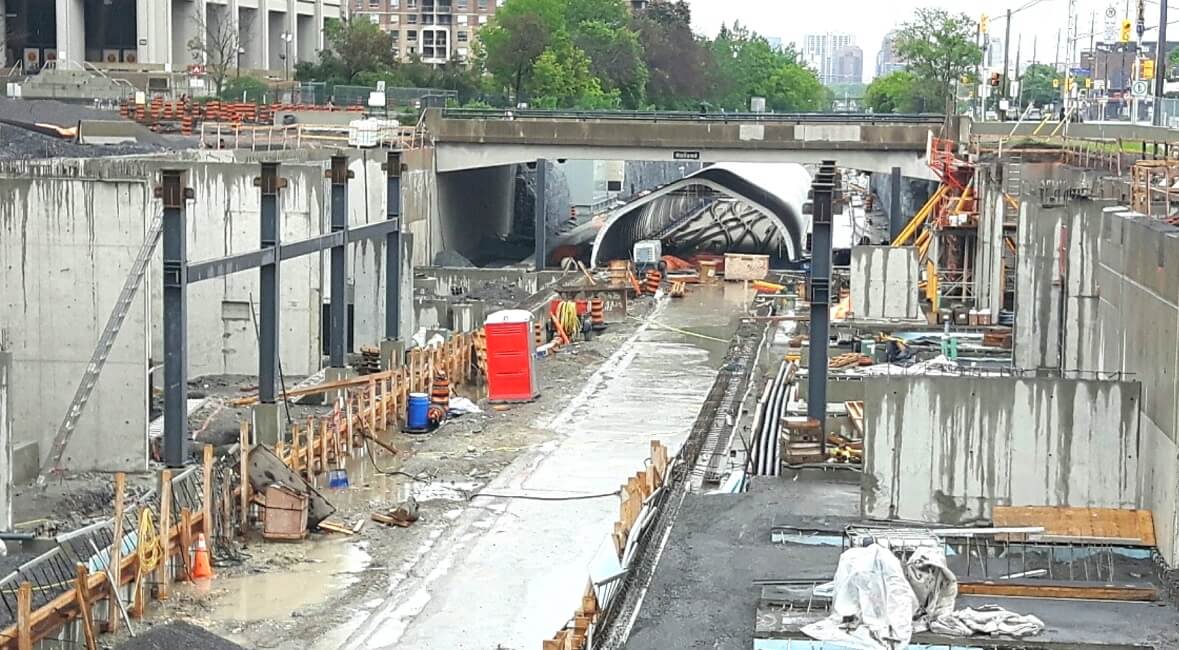 The experience of other nations confirms that just spending more on infrastructure without the over-riding goal of boosting productivity does not help the economy, writes Philip Cross.
The experience of other nations confirms that just spending more on infrastructure without the over-riding goal of boosting productivity does not help the economy, writes Philip Cross.
By Philip Cross, April 22, 2020
As the true scale of the economic disaster due to the coronavirus pandemic lockdown becomes apparent, there are renewed calls for increased government spending on infrastructure.
This has been the reflexive response to every economic slump dating back to the Keynesian proposal to fight the Great Depression by paying unemployed people to dig holes and fill them back up. Unfortunately, too many public works projects are nearly as pointless for long-term productivity growth and just as burdensome for taxpayers.
If Canada engages in another round of public infrastructure investment, it would be the third since 2008, including the Harper government’s Economic Action Plan to alleviate the Great Recession and the Trudeau government’s attempted stimulus after 2015. Before another spending binge, governments should carefully evaluate whether past infrastructure stimulus programs succeeded in boosting the economy in either the short-term or the long-term.
Canada’s most-recent attempts to kick-start growth with public investments did little more than inflate budget deficits while productivity remained stagnant and incomes lagged. The failure to stimulate growth reflects Ethan Ilzetzki’s finding that nations like Canada with floating exchange rates and high debt have low fiscal multipliers. Low rates of return on recent public investments also may demonstrate that two decades of rising capital spending has cleared the inventory of all but the least beneficial projects.
The experience of other nations confirms that just spending more on infrastructure without the over-riding goal of boosting productivity does not help the economy. Japan wasted enormous amounts of money in the 1990s on their infamous “bridges to nowhere” that failed to lift growth. The Barack Obama administration’s plan of taming the Great Recession with infrastructure spending stimulus failed, partly because “there’s no such thing as shovel-ready projects,” as Obama ruefully admitted in 2010. As well, cash-strapped state governments cut back their capital spending, offsetting much of the federal stimulus.
Similarly, the parliamentary budget officer found higher federal capital spending was partly offset by provincial cutbacks in Canada. The sudden deterioration of provincial finances due to the pandemic will only aggravate this offset, as provinces are slammed by surging health-care costs, bail-out demands from universities and municipal governments, and falling tax revenues. Since most infrastructure spending is implemented by provincial and local governments, federal spending likely would morph into a giant transfer diverted to repair tattered balance sheets rather than develop infrastructure.
When this recession ends, Canada will be burdened with record public debt. All segments of society are turning to the federal government for aid, so its deficit is exploding by hundreds of billions. The only way to support this debt will be to restrain government spending once the pandemic passes while restoring private-sector growth.
Not all infrastructure spending is made by government. One-third of Canada’s infrastructure investment is done by the private sector, including communication networks (which successfully handled the upsurge in demand from people working and living at home during the pandemic) and transportation facilities in air, rail, and pipelines. Their successes reflect that private investments are made with an eye to profitability, efficiency, and a capacity to meet unexpected demand. Public-sector projects often make the political calculations rather than economic ones, which explains their dreadful track record of huge cost overruns.
Government infrastructure investment after the crisis should be highly selective in partnering with private sector capital to support higher long-term productivity growth that generates the income to service high debt. One of the reasons recent public infrastructure investments have not worked as hoped is they did not prioritize raising productivity. Government investments often have too many goals, including reducing regional disparities, encouraging progressive trade, fighting climate change, and supporting union wage rates. The federal government needs to focus on moving goods and people efficiently and safely across provincial and international borders, especially to export markets.
Canada for years has spent more on infrastructure than the U.S. or Europe, with little obvious benefit. After the pandemic crisis, we no longer can afford not getting the maximum benefits from infrastructure spending. Partnering with private sector initiatives will help ensure the largest pay-off while minimizing the burden on taxpayers.
Philip Cross is a senior fellow at the Macdonald-Laurier institute and former chief economic analyst at Statistics Canada.




